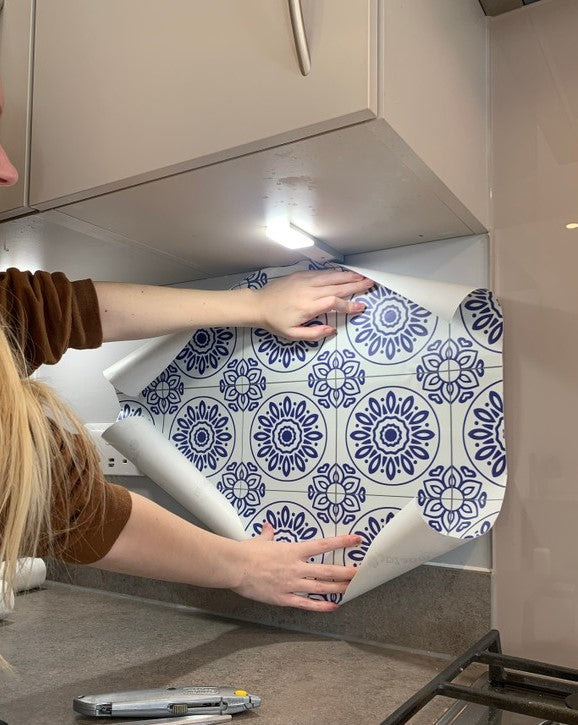Vinyl on a wall tutorial

Step 1- Samples
Purchase samples of your favourite designs & test them on your particular area to make sure the vinyl is suitable & sticks well.
There are lots of different paint / wall types out there there so samples are great to test on your particular surface.
You can make sure the vinyl sticks well to your individual surface by trying samples first!
Our vinyl will not adhere to wipeable paint as this is designed to repel dirt, grime etc & will repel the vinyl.
Please keep in mind when applying vinyl to painted surfaces or varnished surfaces the vinyl may remove this upon removal.
Can i apply vinyl to recently plastered walls?
We reccomened to wait at least 6 weeks before applying vinyl to newly plastered walls, during the setting process of plaster if vinyl is applied to soon this may cause it to untick & peel away.
note- plastered walls must be painted with a suitable paint before vinyl application.

Step 2 - Measuring
Once you have tested your samples & chosen your design you will need to measure your area.
If your area is an awkward size you can request a custom size from us.
To measure - calculate the width x length in CM.
You can also add on a few CM's each way to make sure you have enough to work with.

Step 3- Application
When it comes to applying your vinyl the trick is to apply small amounts at a time.
We suggest peeling no more than 2/3cm back first & then sticking the vinyl into place using your squeegee, by doing this you can make sure its on straight & no creases or bubbles will appear.
Continue slowly peeling 2/3 cm of the backing paper off & sticking down with your squeegee.
Our floor & wall vinyl is heat resistant up to 95 degrees, if it gets hotter than this the vinyl may peel away from the wall or bubble in areas.
please try a sample in your area first to see how the vinyl copes.

Step 4- Continue applying...
Continue repeating step 3 until your wall is finished!
IF you have any plugs on your wall apply the vinyl over the plug and trim away the excess vinyl until the plug shows through like this image shown here
If you finish & still find some air bubbles simply pierce the top of the bubble with a sharp pin and use your squeegee to gently go around the air bubble pushing all air out of the hole you made.
You can also use a hairdryer to apply some heat to the vinyl which will help it stick down.
Please keep in mind when applying vinyl to painted surfaces or varnished surfaces the vinyl may remove this upon removal.
Please note when using seperate sheets together in an area the vinyl needs to be overlapped ever so slightly. When the vinyl settles in it may shrink slightly & this will eliminate any gaps showing.

Step 5- Sealing
Step 6 - Sealing
When using vinyl in & around rooms with moisture it is always best to seal any edges & seams!
Most silicone is removable along with our vinyl so this still works great if you rent!
Simply use your sealant down all the joins / corners in the walls, all along the bottom & all along the top. This will ensure your vinyl stays put for longer & eliminates the risk of any water/steam getting underneath your vinyl.

Still need help?
We have lots of video tutorials on vinyl application, you can view these by clicking the button below!
Any questions please email hello@jesrose.co.uk
